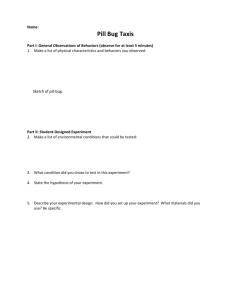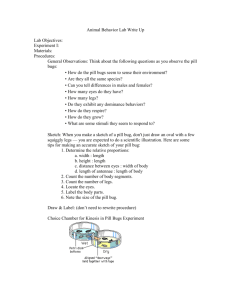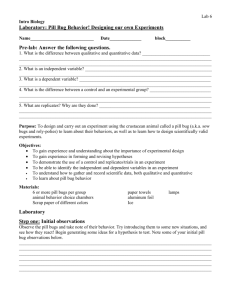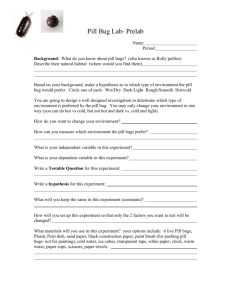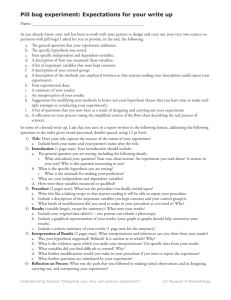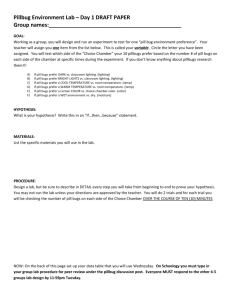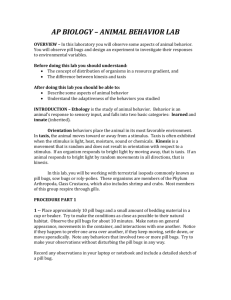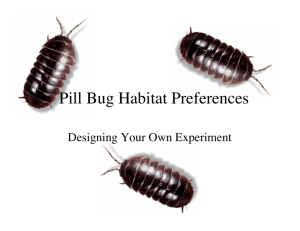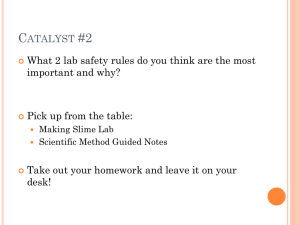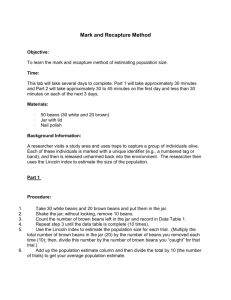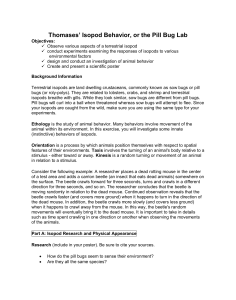Pill Bug Lab - Biology: the Study of Life
advertisement
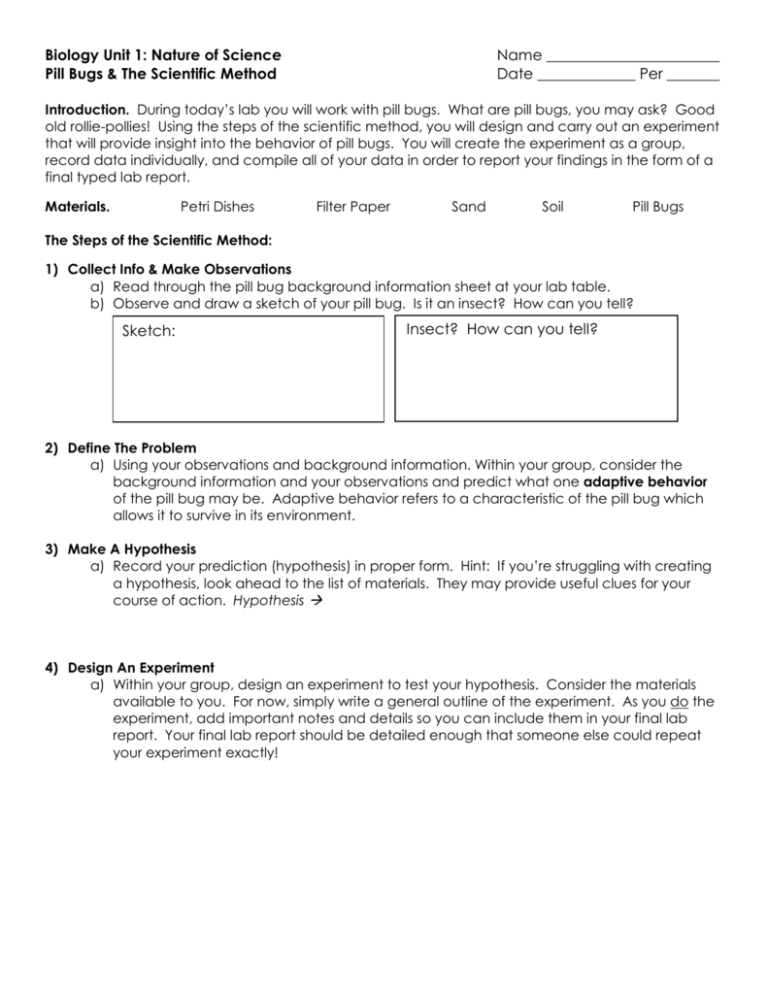
Biology Unit 1: Nature of Science Pill Bugs & The Scientific Method Name _______________________ Date _____________ Per _______ Introduction. During today’s lab you will work with pill bugs. What are pill bugs, you may ask? Good old rollie-pollies! Using the steps of the scientific method, you will design and carry out an experiment that will provide insight into the behavior of pill bugs. You will create the experiment as a group, record data individually, and compile all of your data in order to report your findings in the form of a final typed lab report. Materials. Petri Dishes Filter Paper Sand Soil Pill Bugs The Steps of the Scientific Method: 1) Collect Info & Make Observations a) Read through the pill bug background information sheet at your lab table. b) Observe and draw a sketch of your pill bug. Is it an insect? How can you tell? Sketch: Insect? How can you tell? 2) Define The Problem a) Using your observations and background information. Within your group, consider the background information and your observations and predict what one adaptive behavior of the pill bug may be. Adaptive behavior refers to a characteristic of the pill bug which allows it to survive in its environment. 3) Make A Hypothesis a) Record your prediction (hypothesis) in proper form. Hint: If you’re struggling with creating a hypothesis, look ahead to the list of materials. They may provide useful clues for your course of action. Hypothesis 4) Design An Experiment a) Within your group, design an experiment to test your hypothesis. Consider the materials available to you. For now, simply write a general outline of the experiment. As you do the experiment, add important notes and details so you can include them in your final lab report. Your final lab report should be detailed enough that someone else could repeat your experiment exactly! 5) Gather And Record Data a) As you complete your experiment, figure out a way to record the data you collect. Example: Data Table, Graph, Etc. Make sure you include your entire group’s data! 6) Analyze & Draw Conclusions a) After completing your experiment and looking at the data of your entire group, what did you learn? Did the data support or refute your hypothesis? 7) Report Findings, Address Sources Of Error a) We will report your results in a typed lab report during the next class period. In regards to errors, we’re there any in your experiment? What could you do to improve the experiment? Pill Bugs: Background Information Insects were among the first invaders of land from the sea, a place in which life first evolved. All cells require water to function and keeping hydrated on land requires special features. Insects have evolved a number of physiological adaptations that protect them against dehydration. Among these adaptations are an efficient tracheal respiratory system that minimizes water loss during respiration, efficient excretory systems that minimize water loss in excretion of toxic nitrogenous waste (the function of urine), and a waxy covering that reduces water loss through the skin. Pill bugs are crustaceans (e.g. crabs, lobsters, crayfish, etc) which are mostly aquatic animals. They have moved onto land recently in evolutionary time and therefore have not evolved many of the physiological characters that aid insects to survive and flourish on land. Pill bugs do not have a waxy cuticle and therefore lose water through their skin especially in low moisture environments. They breathe through gills that must remain moist in order to function in gas exchange. Most animals’ main concern is staying alive so how do Pill bugs that are so poorly adapted to their land environment survive? They compensate with behavioral adaptations.
